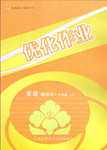题目内容
______ a well-known speaker, he was never at a loss for a word.
- A.As
- B.Though
- C.Because
- D.For

 培优三好生系列答案
培优三好生系列答案 优化作业上海科技文献出版社系列答案
优化作业上海科技文献出版社系列答案Having a husband means an extra seven hours of housework each week for women, according to a new study. For men, getting married saves an hour of housework a week. “It’s a well-known pattern,” said lead researcher Frank Stafford at University of Michigan’s Institute for Social Research. “Men usually work more outside the home, while women take on more of the housework.”
He points out that differences among households (家庭) exist. But in general, marriage means more housework for women and less for men. “And the situation gets worse for women when they have children.” Stafford said.
Overall, times are changing in the American home. In 1976, women busied themselves with 26 weekly hours of sweeping-and-dusting work, compared with 17 hours in 2005. Men are taking on more housework, more than doubling their housework hours from six in 1976 to 13 in 2005.
Single women in their 20s and 30s did the least housework, about 12 weekly hours, while married women in their 60s and 70s did the most – about 21 hours a week.
Men showed a somewhat different pattern, with older men picking up the broom more often than younger men. Single men worked the hardest around the house, more than that of all other age groups of married men.
Having children increases housework even further. With more than three children , for example, wives took o n more of the extra work, clocking about 28 hours a week compared with husbands’ 10 hours.
n more of the extra work, clocking about 28 hours a week compared with husbands’ 10 hours.
【小题1】 How many hours of housework did men do every week in the 1970s?
| A.About 28 | B.About 26 | C.About 13 | D.About 6 |
| A.An unmarried man. | B.An older married man. |
| C.A younger married man. | D.A married man with children. |
| A.Marriage gives men more freedom. |
| B.Marriage has effects on job choices. |
| C.Housework sharing changes over time. |
| D.Having children means doubled housework. |
| A.takes on heavier work | B.does more housework |
| C.is the main breadwinner | D.is the master of the house |